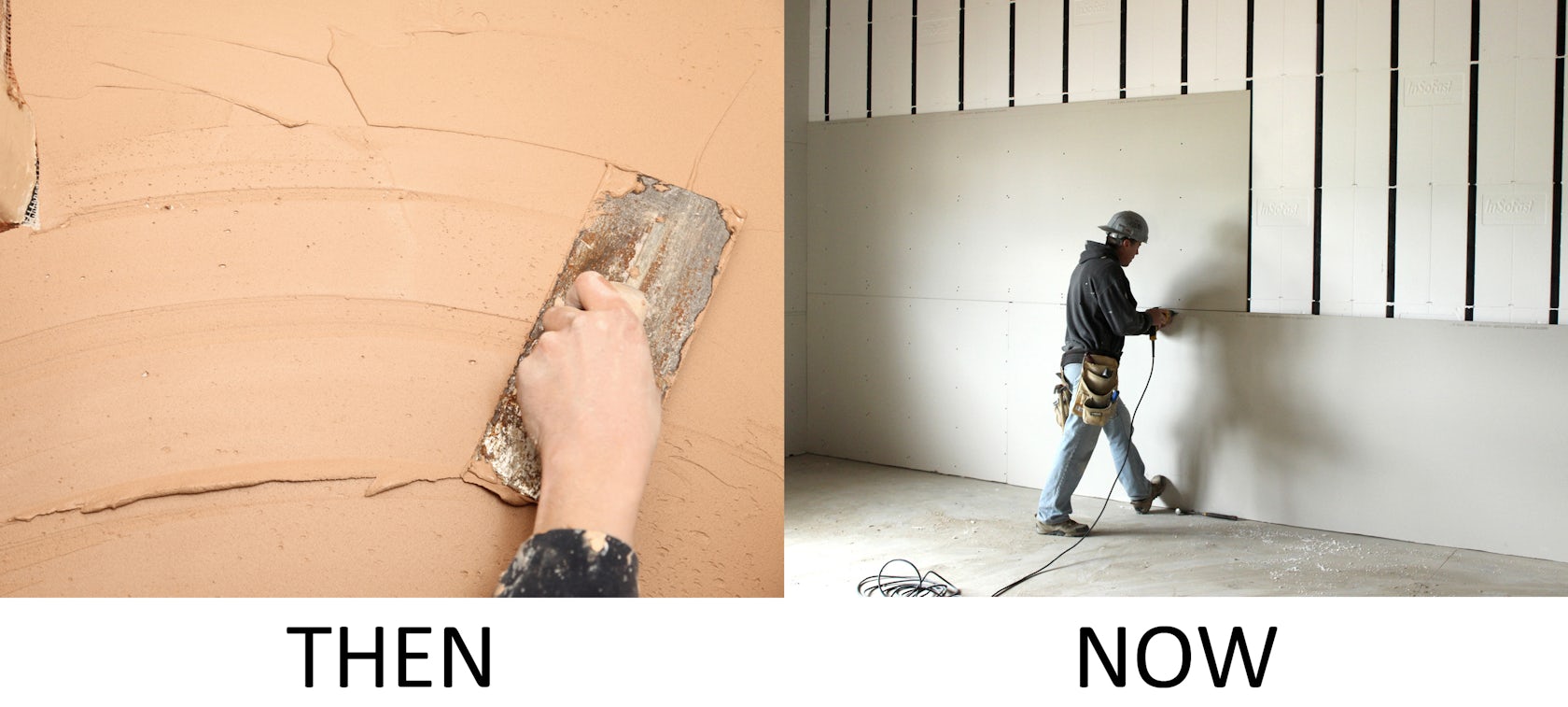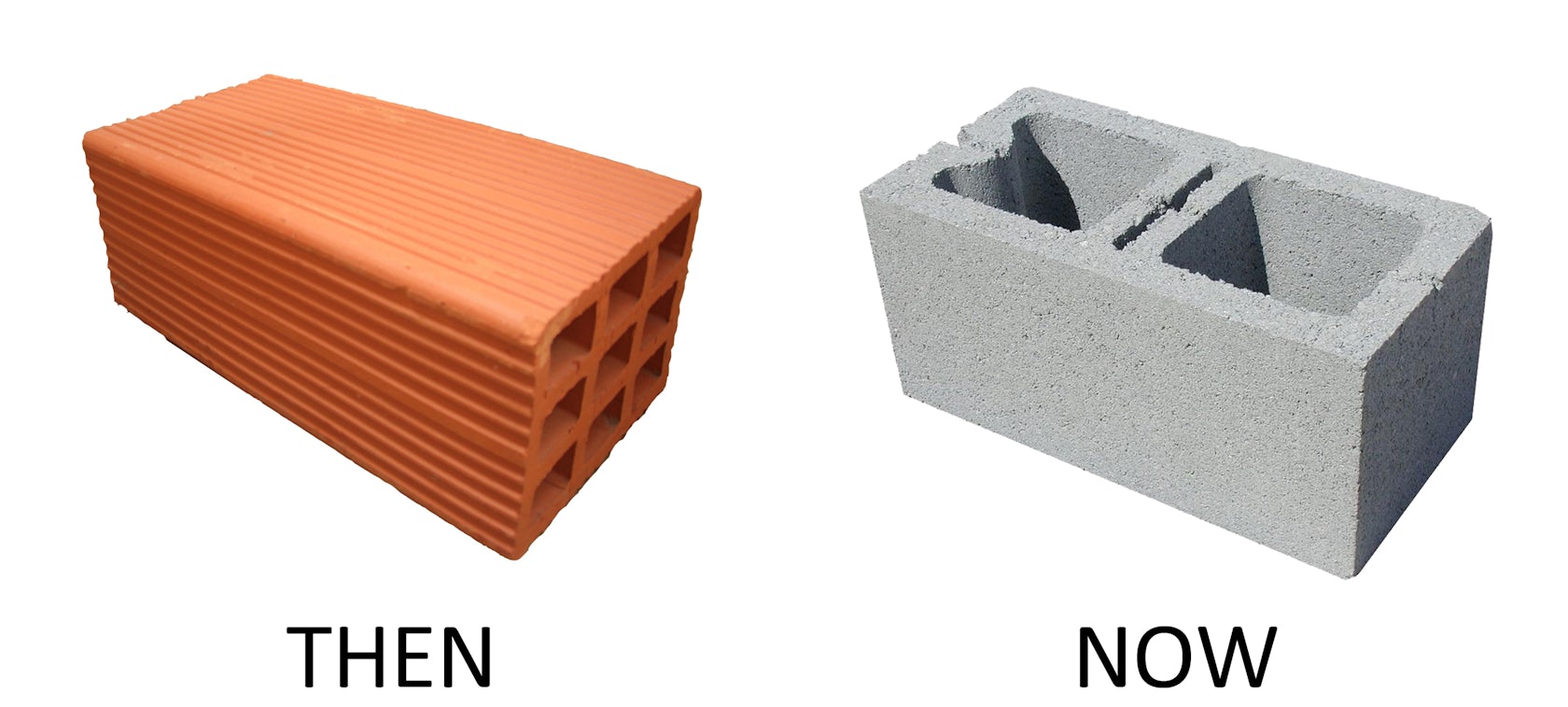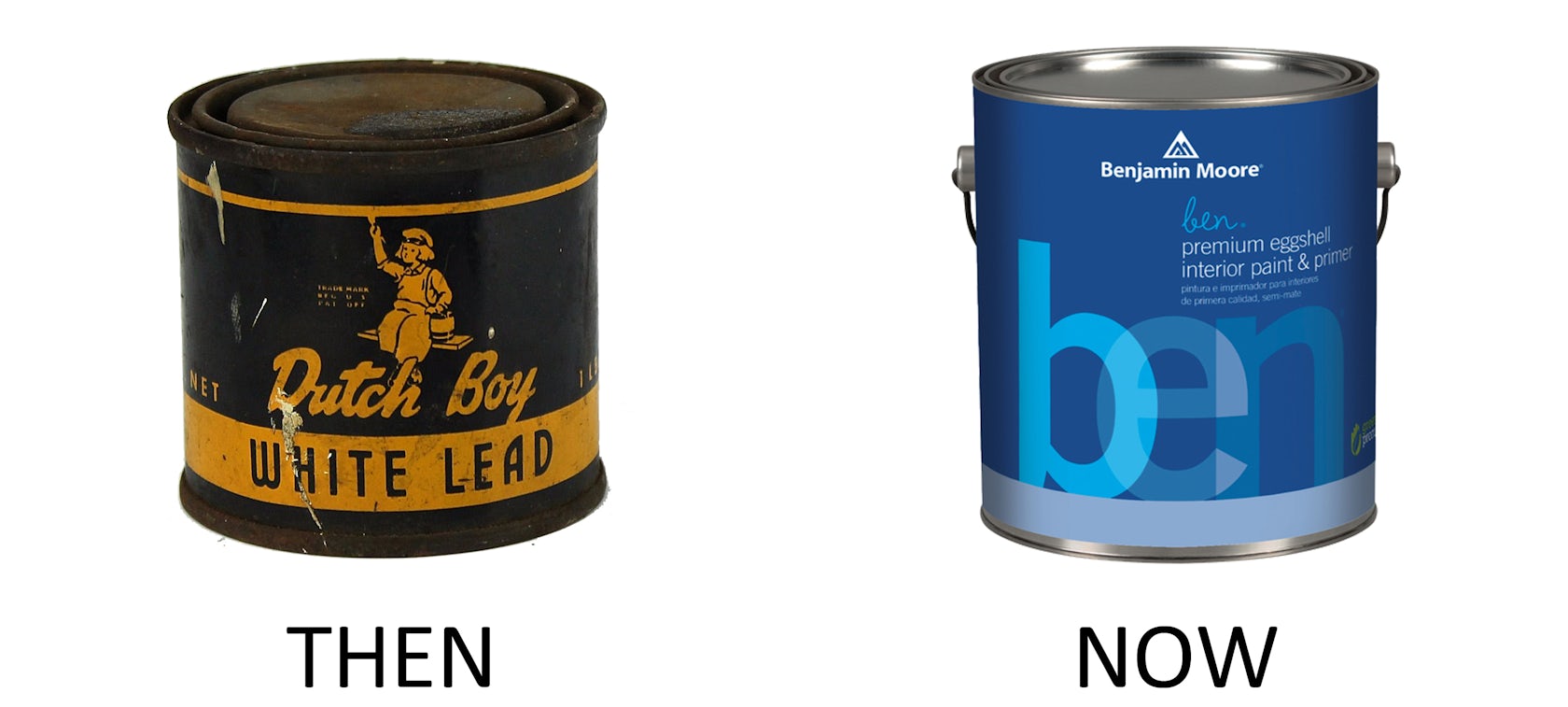Now and Again Vs Now and Then
The A+Product Awards honors the world's best building products, furniture, lighting and materials, every bit called by architects! Pre-register your brand for the upcoming season, and download our costless eBook to discover the winning products of 2021!
Materials are the footing of all compages. Terms like wall, roof and flooring are abstruse concepts — it's what they're made of that matters. While those terms and concepts rarely change, though, the materials that comprise them have evolved considerably over the years. As such, the history of building materials is a history of trial and mistake. Each step comes with lessons learned and improvements fabricated.
As today's era of building pushes on with an ever-expanding array of high tech and experimental materials, it's worth looking dorsum at where we've been. Some of the materials below have been gone for awhile, and information technology's of import for today's young architects to remember why they were phased out in the first place. Other materials are all the same around in some course, merely losing ground to something better, less resources-intensive or but cheaper. Take notation — and hopefully find some inspiration for your own projects, too.

Via Pure Plastering and Insofast
Plaster vs. Gypsum Wall Board
Perhaps the most mutual of architectural elements, the interior partitioning, as information technology's known by nigh people today, is materially quite different than information technology has been historically. Prior to the mid-20th century popularization of Gypsum Wall Board (GWB), especially in North America, almost interior walls were fabricated from spreading wet plaster on board or metal mesh. GWB, a mixture of gypsum and other additives pressed between layers of paper, completely supplanted plaster in the mass market for the simple fact that information technology'southward cheaper and easier to install, though plaster is nevertheless used occasionally to shape hard curves or for some high-end, luxury applications.

Via Cleveland and Domicile Depot
Terracotta Block vs. Concrete Masonry Units
For a long time, hollow, clay-tile blocks were used for structural and not-structural framing in many buildings. While they go along to exist used in parts of Europe, in most of North America they were replaced by the similarly hollow, though mayhap less visually appealing, Concrete Masonry Unit of measurement (CMU) in the mid-20th century. The transition seems to accept been driven by a combination of economics and availability, though terracotta blocks are still noted for their comparatively light weight, sparse profile and inherent fire resistance.

Via Haunn Black House and Sabine'southward New House
Copper Piping vs. Cross-Linked Polyethylene
Copper pipes are by no means a thing of the past, but their popularity is starting to wane due to the metallic's high cost. A viable replacement that's increasing in popularity is cross-linked polyethylene (PEX), a flexible, manufactured tube that can be used in place of traditional rigid pipes to supply hot or cold pressurized water. PEX offers many advantages, including ease of installation and maintenance, low-cal weight, a low thermal conductivity that results in energy conservation, and the elimination of "water hammer" — the mutual household dissonance rigid pipes make when water force per unit area forces them to spring suddenly.

Via The Spruce and Wikipedia
Asbestos Insulation vs. Mineral Fiber Insulation
At that place are many, many different materials available for employ every bit building insulation, and while choosing the appropriate one is often a trade-off between several factors, one type that's no longer available is asbestos-containing insulation. Banned or limited by many countries in the tardily 20th century, asbestos was found to cause a host of deadly health problems, including lung cancer, equally friable bits of it could be released into the air equally dust and breathed in by people. While a wide range of available insulation types ensures there was no single, get-to replacement for asbestos-containing insulation, mineral fiber insulation is frequently a superlative pick for its typically high pct of recycled content and diverseness of application types.

Via Tera Tiptop and osh.com
Lead-based Pigment vs. Titanium or Zinc-based Pigment
Like to asbestos' history in building materials, atomic number 82-based paint was used widely, at least in the Usa, until its ban in household applications in 1978. Exposure to lead-based paint can cause damage to the brain and nervous system, thus paint manufacturers were forced to replace lead with titanium or zinc pigments that offered like benefits, such every bit a shortened drying time, attractive advent and moisture resistance. Similar insulation, there are many options to choose from when specifying paint these days, and while each project volition have its own factors to business relationship for, a key consideration when choosing paint is the level of Volatile Organic Compounds (VOCs) it contains — the less, the better.

Via Chidaneh and JJT Travels
Ancient Rammed Earth vs. Contemporary Rammed World
Rammed earth structure fell out of favor long agone with the advent of bricks and other unitized lode-bearing materials, just it seems to be making a comeback lately due to modern construction techniques and its sustainable properties. Since rammed world for buildings is ordinarily taken from the project site itself, transportation costs are essentially zero, while mod construction tools allow it to be formed and compacted far more than effectively and efficiently than the ancient tools it used to be worked with. Paired with natural insulative backdrop, contemporary rammed earth construction could be a great choice for relatively modest, unmarried-story buildings, its only major drawback being the labor-intensive procedure needed to form it.

Via Pinterest and Nina Dinoff
Bonus: Choosing vs. Specifying
Before a cloth can be used, it must be selected. To that stop, the history of architects picking construction materials is an interesting 1. Prior to the showtime publication of the one time-ubiquitous Sweets Catalog in 1906, architects relied on uncoordinated catalogs from a wide range of product manufacturers. Sweetness's eventual synchronization with the CSI numbering system was a help, but curiously enough, the rise of the internet and Googling for building-products seems to have brought architects back to the de-centralized, pre-Sweets practice of browsing through manufacturer'southward data themselves. Now, platforms like Architizer are bringing that process dorsum into one place again — albeit a digital one.
The A+Product Awards honors the earth'due south best building products, furniture, lighting and materials, every bit chosen by architects! Pre-register your brand for the upcoming season, and download our free eBook to discover the winning products of 2021!
Source: https://architizer.com/blog/practice/materials/then-vs-now-materials/
0 Response to "Now and Again Vs Now and Then"
Post a Comment